by Carole M. Cusack
University of Sydney
NOTICE: THIS WORK MAY BE PROTECTED BY COPYRIGHT
YOU ARE REQUIRED TO READ THE COPYRIGHT NOTICE AT THIS LINK BEFORE YOU READ THE FOLLOWING WORK, THAT IS AVAILABLE SOLELY FOR PRIVATE STUDY, SCHOLARSHIP OR RESEARCH PURSUANT TO 17 U.S.C. SECTION 107 AND 108. IN THE EVENT THAT THE LIBRARY DETERMINES THAT UNLAWFUL COPYING OF THIS WORK HAS OCCURRED, THE LIBRARY HAS THE RIGHT TO BLOCK THE I.P. ADDRESS AT WHICH THE UNLAWFUL COPYING APPEARED TO HAVE OCCURRED. THANK YOU FOR RESPECTING THE RIGHTS OF COPYRIGHT OWNERS.
Gurdjieff Introduces the Movements
• The ‘sacred dances’ or ‘Movements’ were introduced by G. I. Gurdjieff (c. 1866-1949) in 1919, in Tiflis (Tblisi), the site of the foundation of his Institute for the Harmonious Development of Man.
• The proximate cause of this new technique has been hypothesised to be Jeanne de Salzmann (1889-1990), an instructor of the eurhythmics method of music education developed by Émile Jaques-Dalcroze (1865-1950).
• Jeanne and her husband Alexandre had become pupils of Gurdjieff in 1919, and it was her Dalcroze class that Gurdjieff first taught Movements to.
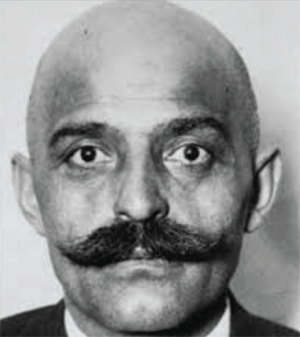
The Contemporary Context
• Esoteric systems of musical education and dance proliferated at the time. Eurhythmy, devised by the former Theosophist and founder of Anthroposophy, Rudolf Steiner (1861-1925) in 1912, is an obvious comparison.
• Steiner and Jaques-Dalcroze established headquarters for the teaching of their systems, Steiner at Dornach in Switzerland, and Jaques-Dalcroze at Hellerau in Germany.
• Rudolf von Laban (1879-1958) developed a similar system, ‘movement choir’, based on his spiritual beliefs, which were derived from Theosophy, Sufism, and Hermeticism.
• Peter Deunov (1854-1944), a Bulgarian teacher of esoteric Christianity (educated in the USA from 1888-1895), devised Paneurhythmy (‘supreme cosmic rhythm’) in the 1920s.
• The Ballets Russes’ The Rite of Spring, choreographed by Vaslav Nijinsky with a score by Igor Stravinsky, debuted in Paris in 1913.
Gurdjieff, Music & Dance
• Gurdjieff was deeply interested in music, theatre, and art.
• When P. D. Ouspensky met him in 1915 he spoke of ‘sacred dances’ he had seen in Eastern temples, and was working on a ballet (which was never performed), The Struggle of the Magicians, in which the heroine Zeinab, and her lover Gafar, are caught in the struggle of the White and Black Magicians.
Let us be quite clear on the point: Blavatsky was regarded as a personality from whom, as out of an electrically-charged Leyden jar, the electric sparks — occult truths — could be produced.
It would lead too far if I were to tell you of all the intermediate links, but certain matters of importance must be mentioned. A really crucial moment had arrived which I can indicate in the following way; although expressed somewhat symbolically, it is in strict accordance with the facts. — The occultists of the right-wing, who in conjunction with the middle party had agreed to the compromise, could say to themselves: It may well be that something very significant can be forthcoming from this personality. But those belonging to the left-wing could also say with assurance: It is possible to achieve something extremely effective in the world with the help of this personality! — And now a veritable battle was waged around her, on the one side with the honest purpose of having much of what the initiates knew, substantiated; on the other side, for the sake of far-reaching, special aims.
-- The Occult Movement in the Nineteenth Century and Its Relation to Modern Culture, by Rudolf Steiner
• With Thomas de Hartmann, a classical composer, Gurdjieff composed hundreds of pieces of music (both for Movements and piano music). Late in his life he improvised on the harmonium.
• He styled himself ‘a rather good teacher of temple dances’
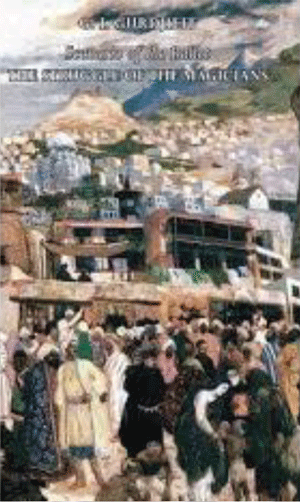
Gurdjieff’s Teaching in Brief
• Law of Three (Triamazikamno) which can be expressed as affirming-denying-reconciling
• Law of Seven (Heptaparaparshinokh)
• Humans are Three-Brained Beings (the mind, the body and the emotions)
• Humans are asleep, and need to awaken and grow a Soul (Kesdjan Body)
• Those with no soul become food for the Moon
• Teaching methods: writings, music, physical labour, inner exercises, and sacred dances.
The Sacred Dances or Movements
• ‘In the strictly defined movements and combinations of the dancers, certain laws are visually reproduced which are intelligible to those who know them … I have many times witnessed such dances being performed during sacred services in various ancient temples’ (Ouspensky 1977 [1947]: 16).
• ‘The Movements are dances and exercises characterised by unusual and symbolic gestures of the body. They often require participants to carry out a series of gestures in unpredictable sequences, and sometimes involve counting in unusual patterns, or the repeating of phrases or words in different languages, such as Russian, Greek, Latin, French, Tibetan, and English. The goal is to highlight and challenge the body’s mechanical nature, promoting “self-remembering” ’ (Petsche 2016).
• The three ‘mechanical’ ‘centres’ of the individual are closely bound to each other, so one’s mechanical forms of moving can be altered through Movements, further bringing about changes in one’s forms of thinking and feeling (Ouspensky 1977 [1947]: 352-353).
• ‘The specific origins or inspiration for Gurdjieff’s Movements are unknown. In an advertisement for Gurdjieff’s Paris Movements demonstrations of 1923 he claimed that they came from particular monasteries in Asia (Blom 2006: 105). These monasteries have never been located, and no Central Asian geographer or anthropologist has reported any dances structured like the Movements (Moore 1991: 351; Webb 1980: 41-42; Bennen 1973: 105-106). In any case, pupils’ accounts emphasise the spontaneous, improvisatory nature of Gurdjieff’s Movements classes, and reveal that Gurdjieff sometimes returned to previously given Movements to make changes or add new elements’ (Petsche 2016).
Emile Jaques-Dalcroze (1865-1950)
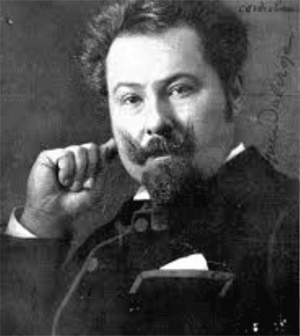
• Emile Jaques-Dalcroze was born in Vienna and became Professor of Harmony at the Geneva Conservatorium of Music. He pioneered Eurhythmics to primary school children in 1905. Eurhythmics was the first part of his three part system (the other two were solfège and improvisation).
• ‘From 1910 to 1914 he directed the Bildungsanstalt Jaques-Dalcroze, a training college built to support his work at Hellerau near Dresden, Germany … which offered solfège (ear training), rhythmic gymnastics, keyboard improvisation, plastique (advanced music-movement study), music theory and practice, Swedish gymnastics, dance, and anatomy. During World War I Jaques- Dalcroze established his own school in Geneva, the Institut Jaques-Dalcroze, where he taught until shortly before his death on July 1, 1950’ (see hnp://biography.yourdicLonary.com/emilejaques- dalcroze#sgSS06Dg4yfyB2DV.99).
The Dalcroze Method
• ‘ “Rhythmic gymnastics,” as Jaques-Dalcroze called his special movement work, offered many new ways to move and make music with the original instrument, the human body. Working from the basics of singing, breathing, walking, and beating time, Jaques-Dalcroze and his early students eventually explored more adventurous possibilities of connecting music and movement. Lunging, skipping, pulling a partner, carrying an imaginary weight, making a cannon—these called for timing, strength, greater use of the body in space, imagination, awareness of form, and/or cooperation with other people. Many exercises in the method were based on walking, which Jaques- Dalcroze took to be the natural breakdown of time into equal parts. For example, students might be told to walk around the room following the music which he would improvise at the keyboard, responding directly to the beat and to changes in speed and dynamics. Students would thus become aware of how they had to adjust the length of their steps and how they needed to control their use of energy and body weight. Other typical activities included quick reactions such as starting or stopping on command and walking twice as fast or twice as slow. Another basic practice was the walking or stepping out of rhythmic patterns. The teacher would play a musical example. After listening carefully, the students would immediately repeat it, matching their steps exactly to the sequence of short and long notes they perceived. Work to develop the sense of measure or bartime was developed from the standard arm gestures of conducting. Experienced students could beat regular bartime with their arms while simultaneously stepping rhythmic patterns. Breathing was understood by Jaques-Dalcroze to be a natural source of dynamics and phrasing. He created many exercises to help students feel how they could shape the flow and energy of breathing. Ideas to encourage the sense of phrasing also included contrasting light and heavy steps, using a real or imagined resistance such as stretching an elastic, or taking turns moving with a partner or in groups. This work led to "realizations" of more complex forms such as inventions, fugues, and rondos. Sometimes students even created "plastic counterpoint," or movement independent of, but related to, its music” (see http://biography.yourdictionary.com/emi ... QqQyREY.99).
Rudolf von Laban (1879-1958)
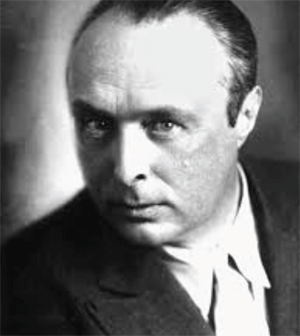
• Rudolf von Laban was born in Bratislava and developed a system of dance notation (Labanotation or Kinetography). He also pioneered ‘movement choir’, based on his spiritual beliefs, which were derived from Theosophy, Sufism, and Hermeticism.
Laban’s Philosophy
• ‘The etymological roots of this Greek term, “choreosophy,” consist of two parts: “choreo,” meaning a stage or space for dancing, and “sophia,” meaning wisdom. Choreosophy may thus be defined as the “teaching of the knowledge of space,” particularly the knowledge of the space of dance. As a philosophy— and Laban wanted his choreosophy to be understood as such—Laban’s system assumes the right to pose questions concerning the meaning of life, the origins of thinking and being, the essence of the world, and mankind’s place in the universe’ (Dorr 2003: 8).
• ‘Laban’s mass dance groups, consisting most often of twenty to one hundred people but sometimes with as many as a thousand, were therefore meant not only to encourage artistic expression and a feeling for movement, but also to build a mystical collective. The simplicity of their underlying plan distinguished the group dances from his abstract, symphonic dance dramas for professional dancers. The choral exercises were marked by a cultic plot in which ecstasy and complete submission to the collective’s overall movements were demanded. Although the interaction between the leader and the group was essentially improvisational, this improvisation never disrupted the strict hierarchy’ (Dorr 2003: 19).
The Conservative Revolution consciously counterposes the "rebirths" of the cyclical world-view to the "Renaissance." According to Mohler, "sunken worlds" well up from below, revealing ancient regional mythologies -- the principle of the Great Mother Earth, which transmits the collective's identity with blood and soil. Accordingly, men can come in closest contact with their "souls" when they are in the throes of a dionysian frenzy.
Nietzsche elevated the "dionysian" into a program to defeat Socratic reason. The essence of the dionysian could be most easily captured while in a state of intoxication, e.g., while under the influence of narcotic beverages, or in the ecstatic abandon with which the dionysian masses dance through the streets -- be they the dancers of St. Vitus in the Middle Ages, the marching columns of the SA or SS; or behind the prayer-wheels of the Islamic fundamentalists. "When millions fall trembling in the dust; we are close to the dionysian," wrote Nietzsche. It is all too clear that the individual -- this greatest treasure of European culture -- played a role here as a mere part of a collective mass. Contempt for the individual in favor of the collectivity, is one of the touchstones of the Nazi-Communist alliance.
In contrast with classical art, what passes for art in the camp of the Conservative Revolution was never intended to ennoble the public, "playfully and merrily" bringing them up to the poet's level, as Schiller put it. Esthetic refinement of the emotions; joy in differentiated content within the perfected shape and form which art has as its aim; the ability to address the potentially finer side of popular impulses -- no, the Conservative Revolution will have none of this. Their art is intended to allow the public to "go outside themselves," to drain themselves, to participate in a collective frenzy. Whatever one's inner beast might be, it should be let out in existentialist exhibitionism; the so-called lyrics of Gottfried Benn or the prose of Hermann Hesse invites us to do so. Dostoevsky's "Russian soul" is only completely genuine when the hero, a drunkard and a brute, maniacally smashes everything to bits, including his tubercular wife.
The Conservative Revolution's art is an assault against reason, as is perhaps best demonstrated by the music of Richard Wagner. The public is lulled into entering the cultist world of mythology. The opera is visited not in order to experience joy over human creativity as exemplified by music, but to observe and participate in a cult ritual.
-- The Hitler Book, edited by Helga Zepp-LaRouche
• Laban admired Nietzsche was a member of the OTO, collaborated with Nazis, moved to Ascona in 1913, practiced nudism, free love, and cultivated ecstasy to break open conventions and establish harmony with nature.
Steiner and Anthroposophy
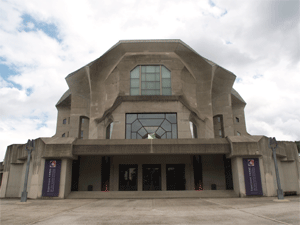
• Anthroposophy means “the wisdom of man,” and is therefore explicitly contrasted with Theosophy, “the wisdom of God.”
• Steiner continued to use Theosophical concepts, including: the notions that human beings have an etheric body beyond the physical, and an astral body beyond the etheric; the existence of higher beings, karma and reincarnation, and the unity of religion and science.
• Anthroposophy understands all within the physical world to be evolving into higher forms, and in humans the development of spiritual senses enables the “digestion” of experiences by the soul. With this digestion certain cosmological realizations are possible.
Steiner’s Teaching on the Body
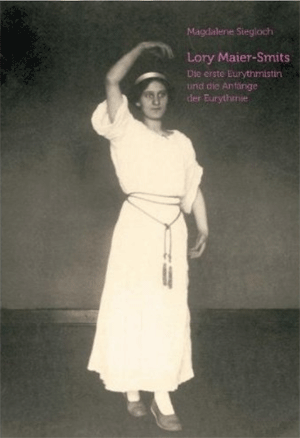
Magdalene Siegloch
Lory Maier-Smiths
Die erste Eurythmistin und die Anfange der Eurythmie
[Google translate: Magdalene victory hole: Lory Maier-Smiths, The first eurythmist and the beginning of eurythmy
• Becoming ‘human’ involved for Steiner the realization that the human was a microcosm of the macrocosmic cosmos. A consequence of this is that the human being is the model for everything, the system that offers the key to all other systems. In 1911, Steiner wrote a poem for Marie von Sivers: ‘Shaping the world in the self/ Seeing the self in the world/ Is the breath of the soul’ (Steiner and Steiner-Von Sivers 1988: 121).
• The centrality of Christ in Anthroposophy follows from this teaching, and Steiner’s teaching contained many examples of this ‘fractal’ structure, in which each component is broken down into components that are smaller models of the whole. The layering of physical body, etheric body, astral body and Ego is similar, though the underlying principle is not one of size but spiritual development (King 1987 [1986]: 360).
Steiner’s Teaching on the Body 3
• In art, as in spiritual exercises and ‘authentic’ life experiences, humans were enabled to be truly themselves. Therefore Steiner paid close attention to the body, teaching on food and diet, clothing and costume, and art forms that partook of bodily experience."
• The movement art of Eurythmy shared certain qualities with his Mystery Plays, in that both art forms were externalisations of ‘innermost laws’ that were perceived through bodily actions. The first Eurythmy classes were taught in 1912 and by 1919 two courses of training had been developed and Steiner’s Eurythmists had toured Europe giving public demonstrations. Marie von Sivers and Lory Smits, an early teacher of the art, contributed significantly to its development."
Peter Deunov and Paneurhythmy
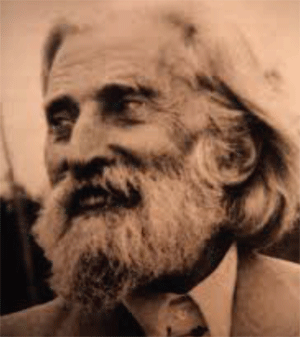
• ‘Paneurhythmic exercises are exact number (28 exercises or paneurhythmic forms) always played in the open air and always starting from spring (22 March for people living in the North Hemisphere/ 22 September for the people living in the South Hemisphere) and ending at the beginning of autumn (22 September/ 22 March). Special attention is given to the Sun. Paneurhythmy is divine and nobody can change its exercises and figures’ (Peneva 2013: 281).
The Meaning of Paneurhythmy
• ‘Paneurhythmy is a science of the harmonious, conscious movements. It has three parts: a cycle of 28 exercises, a cycle titled “Rays of the Sun”, and a cycle titled “Pentagram”. All of them take about an hour to complete. Paneurhythmy is danced in pairs forming a circle – there may be more than one concentric circle if necessary. One person of the pair represents the masculine principle; the other one represents the feminine principle. The musicians stay in the center of the circle’ (Peneva 2013: 282).
• ‘The main idea is the idea of God, the Supreme Intelligence. In the Paneurhythmy exercises the physical, spiritual and divine worlds are interrelated. The thought should be in arms and legs, in all cells of the body, so that thought and feelings should participate in every movement and penetrate every cell’ (Peneva 2013: 282).
• Paneurhythmy is ‘a form of ritual dance mixed with meditation, visualisation and poetry recitation that was supposed to tune the performer into the rhythm of nature’ (Anczyk 2015: 16)
Paneurhythmy at Rila Mountain, Bulgaria
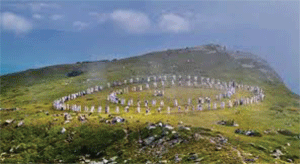
Deunov on Human Fulfillment
• ‘P. Deunov (Beinsa Douno) laid the foundations of holistic medicine in Bulgaria and provides a key concept of man as a trinity of spirit, soul, and body. In general lectures (1941) Deunov teaches his followers that happiness and health are natural conditions. Happiness is achieved by inner purity, light of the mind and warmth of the heart. Basic concepts in the study of happiness are: love, moderation, light (knowledge and wisdom), thankfulness [13, 14]. Deunov creates Paneurhythmy (movement and thought - in harmonious whole) which gathers followers around the world every year after in the incredible beauty of the Seven Lakes of Rila mountain, Bulgaria’ (Popova 2013: 257).
The Ballet Russes’ Le Sacre du Printemps (1913)
• The final possible influence on the Movements noted in this article is the Paris debut of Sergei Diaghilev’s Ballets Russes’ The Rite of Spring, choreographed by Vaslav Nijinsky with a score by Igor Stravinsky, in 1913.
• It is argued that body-based disciplines introduced by occult teachers with Theosophically-derived systems, are a significant phenomenon in the early twentieth century, and that Gurdjieff’s sacred dances, though distinct to Eurythmy and others, emerged in the same melting pot and manifest common features and themes with the systems of Steiner, Jaques-Dalcroze, Laban, Deunov, and others.
Primitive Ritual, Percussive Music
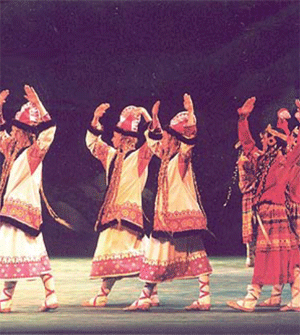
• ‘The Rite, subtitled "Pictures of Pagan Russia in Two Parts", begins with primitive rituals celebrating spring, and ends with a young sacrificial victim dancing herself to death … The Rite opened with an introductory melody adapted from a Lithuanian folk song, featuring a bassoon playing, unusually, at the top of its register, and prompting composer Camille Saint-Saëns to exclaim: “If that's a bassoon, then I'm a baboon!” The heavy, stomping steps were a world away from the elegance of traditional ballet, as the dancers enacted the brutal plot … The reviews were merciless. "The work of a madman … sheer cacophony," wrote the composer Puccini. "A laborious and puerile barbarity," added Le Figaro's critic, Henri Quinard. It was 29 May 1913. Classical music would never be the same again’ (Kim Willsher, ‘Rite that Caused Riots: Celebrating 100 Years of The Rite of Spring’, The Guardian, 27 May, 2013, at https://www.theguardian.com/culture/ 2013/may/27/rite-of-spring-100-yearsstravinsky.
Some Conclusions 1
• Gurdjieff, jaques-Dalcroze, and Deunov are exact contemporaries, Laban a little younger, and Steiner died young.
• Jacques-Dalcroze is the odd one out as he’s not an esoterist and The Rite of Spring is an art work that was not designed as an esoteric work (though it could be read as such).
• Devotees of Eurythmy, Movements, and Paneurhythmy all insist they are unrelated, separate, and (usually) that the esoteric spiritual movement art that they practice is ‘true’ and the others are in some sense sham, false.
• All are (broadly) cosmological in nature and aim to bring about the spiritual evolution of practitioners.
• It is known that Gurdjieff and Jaques-Dalcroze were introduced by Jeanne de Salzmann and that before he settled in France and established the Institute for the Harmonious Development at the Prieuré des Basses Loges ff had discussed purchasing Jaques-Dalcroze’s property at Hellerau.
Some Conclusions 2
• Jaques-Dalcroze is first, 1905. Of the esoteric systems Steiner is first (Eurythmy is developed in 1912, and tours post-World War I Europe in 1919).
• Gurdjieff teaches first Movements in 1919, though he has been talking about ‘sacred dances’ since his emergence as a teacher in 1912-1913.
• Laban has developed his ideas regarding dance (‘Movement Choir’) by the time he moves to Ascona in 1913, and The Rite of Spring premieres in 1913.
• Deunov develops Paneurythmy in the 1920s, so that is definitely the latest form of esoteric dancing.
________________
References:
• A. Anczyk (2015) ‘Mages of the Isles: Some Remarks on the Esoteric Inspirations in British Druidry’, The Polish Journal of Arts and Culture, Vol. 13, No. 1, pp. 9-22.
• J. G. Bennett (1973) Gurdjieff: Making a New World. London and New York: Harper & Row.
• G.-J. Blom (2006) Oriental Suite: The Complete Orchestral Music 1923-1924. The Netherlands: Basta Audio Visuals.
• E. Dorr (2003) ‘Rudolf von Laban: The “Founding Father” of Expressionist Dance’, Dance Chronicle, Vol. 26, No. 1, pp. 1-29.
• J. Moore (1991) Gurdjieff: Anatomy of a Myth. A Biography. Shamesbury: Element.
• P. D. Ouspensky (1977 [1947]) In Search of the Miraculous: The Teachings of G. I. Gurdjieff, San Diego, New York and London: Harcourt Inc.
• B. Peneva (2013) ‘Paneurhythmy and Eurhythmy: Philosophy and Practice’, in Miladin Jovanovic and Dorde Nicin (eds), Zbornik Radova Proceedings, Panevropski Univerzitet: Apeirion, pp. 279-285.
• J. J. M. Petsche (2016) ‘The Sacred Dance of the Enneagram: The History and Meanings Behind G. I. Gurdjieff’s Enneagram Movements’, Fieldwork in Religion (forthcoming).
• S. G. Popova (2013) ‘What Makes People Happy? Why is Happiness a Global Interest in 21st Century?’ Global Virtue Conference, pp. 255-260.
• R. Steiner and Steiner-von Sivers, M. (1988) Correspondence and Documents:1901-1925. Trans. C. and I. von Arnim. London and New York: Rudolf Steiner Press and Anthroposophical Press.
• J. Webb (1980) The Harmonious Circle: The Lives and Work of G. I. Gurdjieff, P. D. Ouspensky, and Their Followers. London: Thames & Hudson.
• K. Willsher, ‘‘Rite that Caused Riots: Celebrating 100 Years of The Rite of Spring’, The Guardian, 27 May, 2013, at https://www.theguardian.com/culture/201 ... stravinsky.
